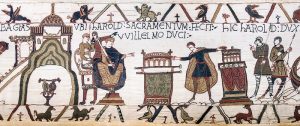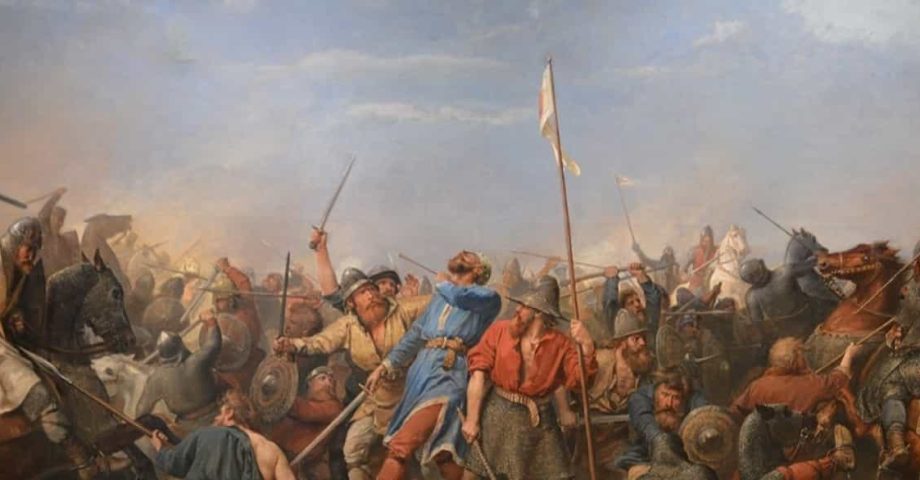1066 was arguably one of the most famous years in European history, and it’s likely many of you out there will have studied this brutal 12 months back in history class. However, while many of us know what that year represented for two particular countries, but not all of us do. So, with that in mind, here are some ferocious and fun facts about 1066!
1. It was the year the Battle of Hastings took place.
Most people recognise the year 1066 from the Battle of Hastings! This conflict was fought on October 14th of the year in question. It marked the Norman Conquest of England, with William the Conqueror defeating King Harold II on his home turf.
2. The battle arose thanks to the death of England’s previous king.
The Battle of Hastings was ultimately brought on by the death of King Edward the Confessor. King Edward died on January 5th, 1066. His death without a clear heir led to the succession crisis, eventually leading to the Battle of Hastings.
3. Harold claimed the throne, but not for long!
Following the death of King Edward, Harold Godwinson, the-then Earl of Wessex, claimed the English throne for himself. This led to his confrontation with William of Normandy and the Norwegian King Harald Hardrada. Lots of Harrys getting involved, then!

4. King Harald attempted to seize the throne before William.
In September 1066, Harald Hardrada invaded England, seeking to claim the throne for himself. He was defeated, however, by Godwinson, at the Battle of Stamford Bridge on September 25th.
5. The Bayeux Tapestry weaves a tale or two about this brutal year.
If you would like to have an idea about what the events of 1066 looked like in all their gory detail, look no further than the Bayeux Tapestry. The Tapestry, a famous embroidered cloth, depicts the events leading up to and including the Battle of Hastings.
6. William soon crossed the Channel to try and claim England’s seat.
William the Conqueror’s fleet crossed the English Channel in September 1066, eventually landing in Pevensey, Sussex. This marked the beginning of the Norman Conquest.
7. York was a pivotal city in the battle between William and Harold.
After the Battle of Stamford Bridge, the city of York surrendered to King Harold’s forces. This allowed Harold to consolidate his position in northern England before facing William.
8. Harald Hadrada was successful elsewhere in his skirmishing.
Prior to the Battle of Stamford Bridge, there was the Battle of Fulford on September 20th, 1066. Harald Hardrada’s forces defeated the English forces on this date, led by the Earls of Mercia and Northumbria.
9. William wasn’t on time… thanks to the weather!
Believe it or not, William the Conqueror’s planned invasion of England was delayed by difficult winds! This caused his fleet to wait in Normandy for several weeks before being able to set sail.

10. Harold fell thanks to an arrow in a sensitive place…
One of the most notable facts shared about King Harold II is his death. He was killed during the Battle of Hastings by an arrow that struck him in the eye. His death marked the end of the Anglo-Saxon rule in England and introduced the country to the Anglo-Norman age.
Following his tremendous victory at the Battle of Hastings, William the Conqueror became King of England. His victory led to the establishment of Norman rule in the country.
11. English culture changed for good thanks to William’s triumph.
The Norman Conquest definitely had a profound impact on English culture and, notably, the language. Many French and Latin words were introduced into the English vocabulary and helped shape the development of Middle English.
FAQs about 1066
What happened in 1066 with the Vikings?
The last Viking invasion of England took place in the year 1066. Harald Hardrada sailed up the River Humber with his men and marched to Stamford Bridge.
When did the French rule England?
It is important to understand that England was never ruled by a king of France! However, from 1066 to 1204, the Kings of England were also technically Dukes of Normandy.
Why wasn’t English replaced by French?
Even though England started being ruled by Normans in 1066, and Anglo-Norman became the main language of the royal court and government, English was never really lost. French was only really spoken by the nobility at the time, so English remained prominent as a language in the country.
Further reading
https://www.english-heritage.org.uk/learn/histories/1066-and-the-norman-conquest/
https://www.historic-uk.com/HistoryMagazine/DestinationsUK/The-Battle-of-Hastings/
Do you know any interesting facts about 1066? Share them in the comments below!









